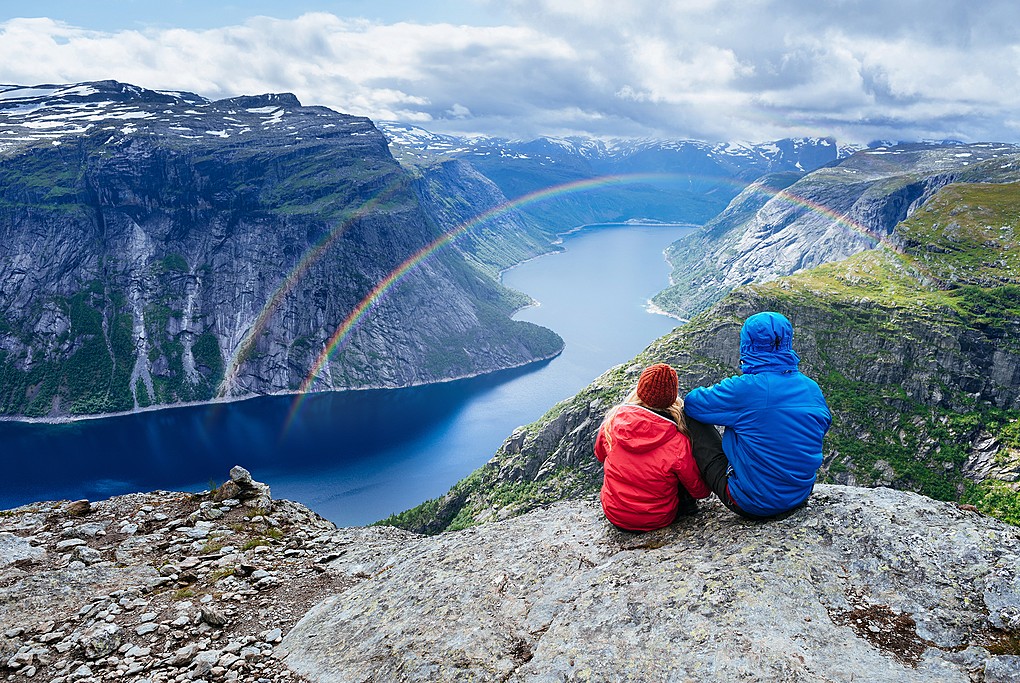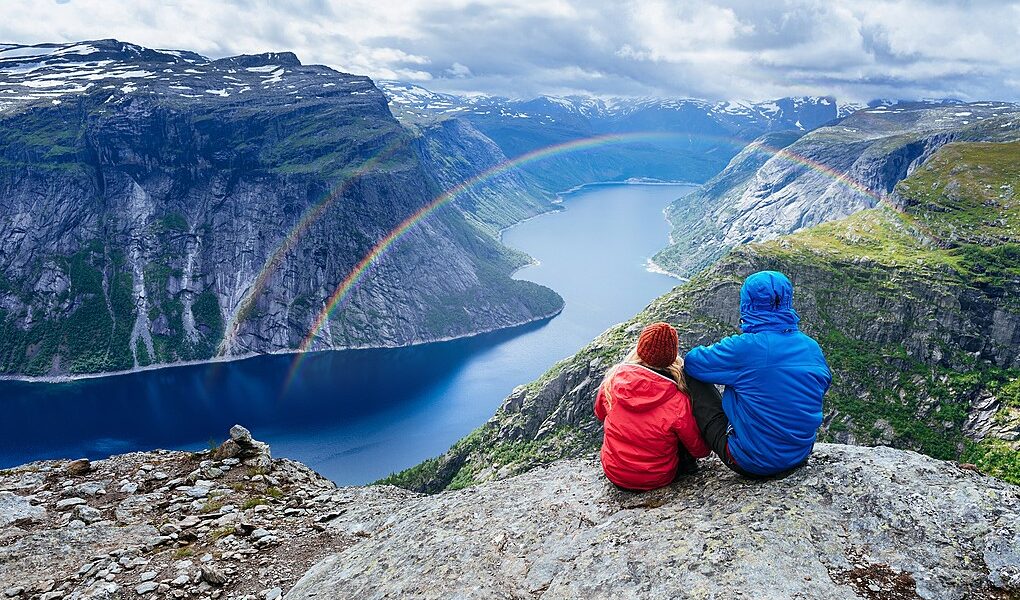
In Norway, they say there’s no bad weather, only bad clothing. Norwegians have made an art out of hacking through any type of terrain, in any kind of weather, at any time of year, but that often means giving up fashion for function. So leave your high heels and fancy frocks at home, and follow this list to make the most of the space in your suitcase.
## Your Ultimate Packing List for Norway: A Comprehensive Guide
Norway, a land of breathtaking fjords, majestic mountains, and vibrant cities, offers an unforgettable travel experience. Whether you’re planning a summer adventure or a winter escape, packing appropriately is crucial for enjoying all that Norway has to offer. Norwegians, regardless of age or background, possess a unique ability to dress stylishly while prioritizing practicality and comfort. The key is versatility, as the weather in Norway can change unexpectedly. Many of the recommended clothing items for winter will prove equally useful during the summer months, ensuring you’re prepared for any conditions.
### Clothing & Shoes: Layering is Key
The cornerstone of dressing for Norway is layering. This approach allows you to adapt to fluctuating temperatures and activities throughout the day. Begin with a base layer of moisture-wicking material, such as merino wool or synthetic fabrics, to keep your skin dry and comfortable. Add middle layers for insulation – sweatshirts, zip-up fleeces, or the iconic, thick, patterned wool sweaters that are a hallmark of Norway. These sweaters not only provide warmth but also serve as a fantastic souvenir, sure to be the envy of your friends back home during the winter season. For your outer layers, opt for loose-fitting, windproof, and waterproof garments. Ensure they are roomy enough to allow for comfortable movement and breathable enough to release excess heat and moisture. Many Norwegians own a primary winter coat but rely on adaptable middle layers to customize their insulation levels for any activity and temperature. This system allows for ultimate flexibility and comfort in Norway’s diverse climate.
Don’t underestimate the importance of accessories. Hats, gloves, and scarves are essential for staying warm, and layering these items is often necessary in particularly harsh weather. Loop scarves offer superior coverage compared to traditional scarves, as they can be doubled or tripled for added warmth. Hats should contain some wool for extra insulation. Consider wearing a set of synthetic or wool mittens inside a thicker pair of windproof mittens for maximum protection against the cold.
For those planning to explore Norway’s stunning hiking trails, the Norwegian Trekking Association strongly recommends wool for any clothing that comes into direct contact with your skin. Wool excels at absorbing moisture, keeping you dry and preventing discomfort. If you intend on undertaking longer treks, pack an ample supply of socks, enough to wear two pairs simultaneously. This reduces friction and helps prevent blisters. Be prepared to change socks more than once a day if you encounter wet terrain. Investing in high-quality hiking boots is essential. Look for boots with good tread for optimal grip, laces for adjustable tightness, and adequate support for your heels and ankles. Most importantly, ensure your hiking boots are thoroughly broken in before embarking on a long trek to avoid painful blisters. Remember to consider the terrain you’ll be traversing. If you plan on venturing onto glaciers near Jostedalsbreen or hiking in areas like Jotunheimen National Park, specialized footwear may be required.
### Sun Protection: More Important Than You Think
Despite Norway’s northern latitude, sun protection is crucial, even in winter. The sun’s rays reflecting off the snow can be surprisingly intense and just as damaging as in warmer climates. Pack a high-SPF sunscreen and apply it liberally, even on cloudy days. A good pair of sunglasses is also essential. Look for sunglasses that fit securely, provide UV protection, and offer wind resistance. These will protect your eyes from glare and harsh weather conditions, whether you’re exploring the vibrant city of Oslo or venturing into the Arctic landscapes of Tromsø. Don’t let the northern location fool you, the sun can be surprisingly intense!
### Electronics: Capturing the Memories
Don’t forget your camera to capture the unforgettable moments of your Norwegian adventure. Along with the camera, bring any accessories you need to optimize its performance. This might include a tripod for steady shots, a remote shutter release for group photos, or simply an extra battery and memory card to ensure you never run out of power or storage space. Even if your camera has its own case, enclose it in a Ziploc plastic bag for added protection against rain and moisture. While phone service may be unreliable in remote areas, a mobile phone is still a valuable safety tool. A normal charger is useless in the wilderness, so consider investing in solar phone chargers to keep your phone powered up. This is especially important if you plan to hike in areas like Hardangervidda National Park or explore the remote islands of Lofoten.
### Day & Overnight Packs: Choosing the Right Size and Features
If you plan to venture outside of city limits, a backpack is essential. The size of the backpack will depend on the duration and type of your trip. Look for sturdy, well-built, lightweight packs with multiple flaps and pockets for organized storage and easy access to your gear.
For **daypacks**, ensure enough room for layers of clothing, a camera, a water bottle, and a lunchbox. Smaller outer flaps provide convenient storage for a wallet and keys, and a waterproof compartment is essential for electronics.
For **overnight packs**, the size depends on the length of your trip and the amount of gear you need to carry. If you are of medium build, it is best to limit yourself to medium sized packs, or you’ll really be struggling on strenuous hikes. **Packs with frames** are an excellent option for multi-day hikes, providing support and distributing weight effectively. Some even feature a bouncy mesh layer that keeps the pack off your back, reducing sweating. A thick and **supportive waist strap** is essential to transfer the majority of the weight from your shoulders to your hips.
### Food & Drink: Staying Fueled and Hydrated
If you have dietary restrictions, such as Celiac disease, you will find health food stores in larger cities, but they can be expensive. If you have favorite dry snacks that pack well, consider bringing some from home. Trekkers should pack **stackable, tightly sealed containers** for storing snacks and meals on the go. Bring **reusable utensils** that can be washed instead of thrown away to reduce waste. Remember to pack out everything you pack in, as trash cans may be scarce on the trails. A lightweight, easily **refillable water bottle** is also essential. Always purify water collected from streams and lakes by boiling it or treating it with giardia tablets. Even in pristine environments, water sources may not be safe to drink. Ensure you have enough food and water to sustain you during your adventures, whether you’re exploring the bustling streets of Bergen or hiking in the serene Telemark region.
### Optional Hiking Gear: Enhancing Your Experience
While not strictly essential, certain hiking accessories can significantly enhance your comfort and enjoyment of your trip. Norwegians highly recommend **hiking poles**. These provide stability on steep climbs and propel you forward, creating a rhythmic motion that can make longer hikes more enjoyable.
A **Camelbak** or other water bladder may seem excessive, but it’s invaluable for staying hydrated during summer hikes. These lightweight bladders can be strapped to your body or pack, store more water than bottles, and allow you to drink without stopping.
While they might seem outdated, **a map and a compass** can be lifesavers if you get lost. Keep them together in a Ziploc bag to protect them from the elements and prevent them from getting separated in a large pack. Knowing how to navigate with a map and compass is a valuable skill, especially when exploring remote areas like the Finnmark region.
### Personal Items: Essential for Comfort and Safety
Although pharmacies in Norway carry most common medications, it’s wise to bring your own supply of any **prescriptions** you take regularly. While doctors are generally English-speaking and helpful, it’s more convenient to have your medication readily available.
If you wear contacts, pack a few extra pairs and any necessary supplies. If you travel with a guide, they should have **First Aid supplies** on hand. However, it’s still a good idea to bring your own basic travel supplies, such as bandages, antiseptics, probiotics, and antihistamines.
For travelers with medical conditions that impair speech or cause life-threatening symptoms, wearing a **medical alert bracelet** is strongly advised. The bracelet should clearly state their condition and an emergency contact number.
By carefully considering these packing recommendations, you can ensure a comfortable, safe, and unforgettable adventure in Norway, whether you’re exploring the charming coastal towns, hiking through breathtaking national parks, or experiencing the vibrant culture of its cities. Enjoy your trip!
B-1952

